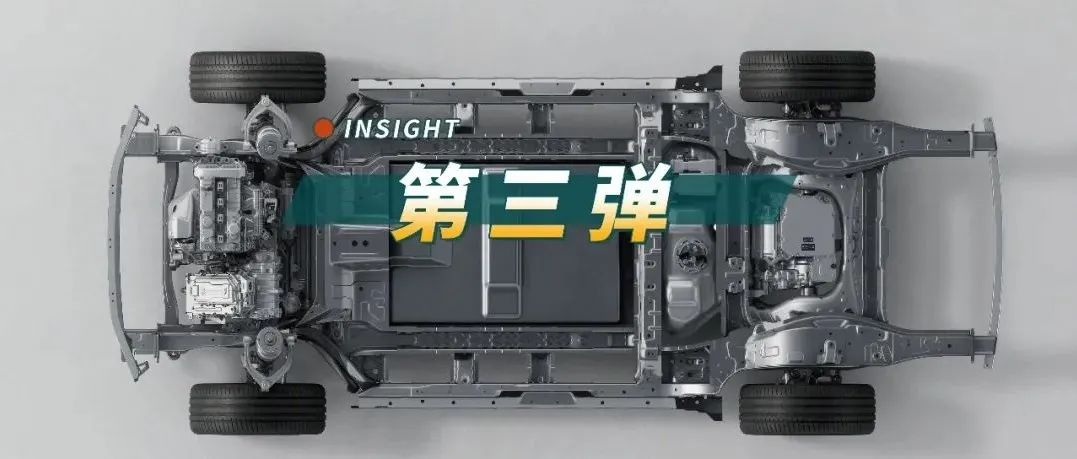Ideal L9 Full-Size SUV Release – Episode Three
Author: Xiaodong Xu
Editor: Chris
It’s Wednesday again, and Ideal Automotive’s third episode of L9 full-size SUV release is here as promised.
This time, Ideal focused on releasing information about L9’s extended-range power system, not just limited to but also including some information about the chassis controller and electronic architecture.
Perhaps more important than the release episodes, Ideal Automotive announced that the Ideal L9 will be officially released on April 16th, and the price will range from 450,000 to 500,000 yuan depending on the configuration.
This also means that before the final release, Ideal has prepared three Wednesdays to release Ideal L9’s product information. Which parts do you think it will cover? Comment below and guess! 🙂
Four cylinders – one more than three
According to Ideal Automotive’s official Weibo account, the Ideal L9’s range is 1315 km (CLTC standard) and the pure electric range is 215 km, with a 44.5 kWh battery pack and a fuel range of 1100 km. Compared to Ideal ONE’s 40.5 kWh battery pack and total range of 1,080 km (NEDC standard), the increase is small but significant enough for a full-size SUV.
Specifically, the Ideal L9 abandons the Dongan 1.2T three-cylinder engine and replaces it with a 1.5T four-cylinder engine, with a thermal efficiency of 40.5%, a significant improvement over Ideal ONE. What does 40.5% mean? The thermal efficiency of mainstream engines is generally around 35%, and the highest thermal efficiency in mass-produced hybrid systems is currently probably the Geely Lianguangzheng engine Hi-X, with a maximum thermal efficiency of 43.32%.
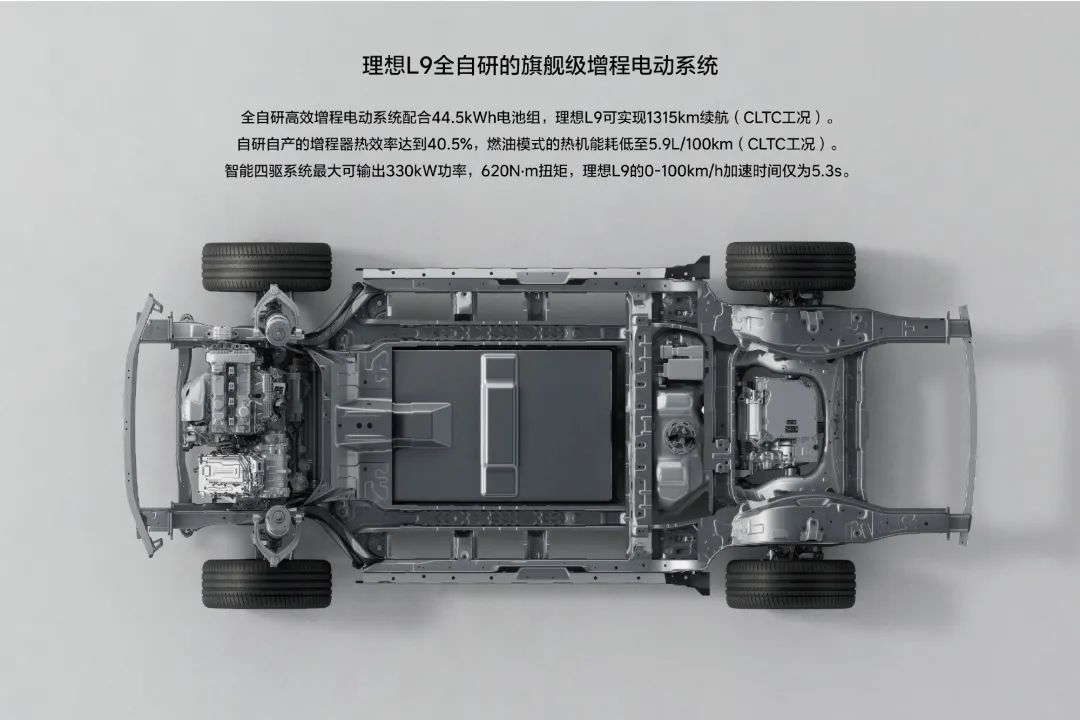
Thermal efficiency can directly affect fuel consumption performance, and Ideal’s official statement is that “the heat engine energy consumption of the fuel mode is as low as 5.9 L/100 km (CLTC standard).” There are several key words in this statement, fuel mode, heat engine, and CLTC standard.
Calculating actual energy consumption based on this statement:
- If CLTC standard is converted to daily usage, a range of ×0.75 is basically achievable (not in cold winter or pure high-speed driving).
- It is certain that cold car fuel consumption is higher than hot car fuel consumption. However, since each person’s driving environment is different, and the proportion of increased cold car fuel consumption decreases as the driving distance increases, let’s assume +5% for calculation.
- Based on this calculation, the actual comprehensive fuel consumption of L9 is expected to be around 8.25 L/100 km, calculated as 5.9 L ÷ 0.75 * 1.05.As a comparison, the official NEDC hot engine oil consumption of Ideal ONE 2021 is 6.05 L/100 km. A large amount of data feedback shows that the daily commuting fuel consumption of Ideal ONE is basically between 8-9 L/100 km. If the actual fuel consumption of L9 is similar to what we have speculated, even in the case of significantly increased size, weight, and performance, the energy consumption control of Ideal L9 is still good as it can achieve a similar fuel consumption as Ideal ONE.
In terms of pure electric range, although the battery has increased by five degrees, the actual mileage is basically the same as that of Ideal ONE’s current pure electric range level. This is also the product concept that Ideal Automobile has been adhering to for a long time: “Electricity for city use, gasoline for long-distance use.”
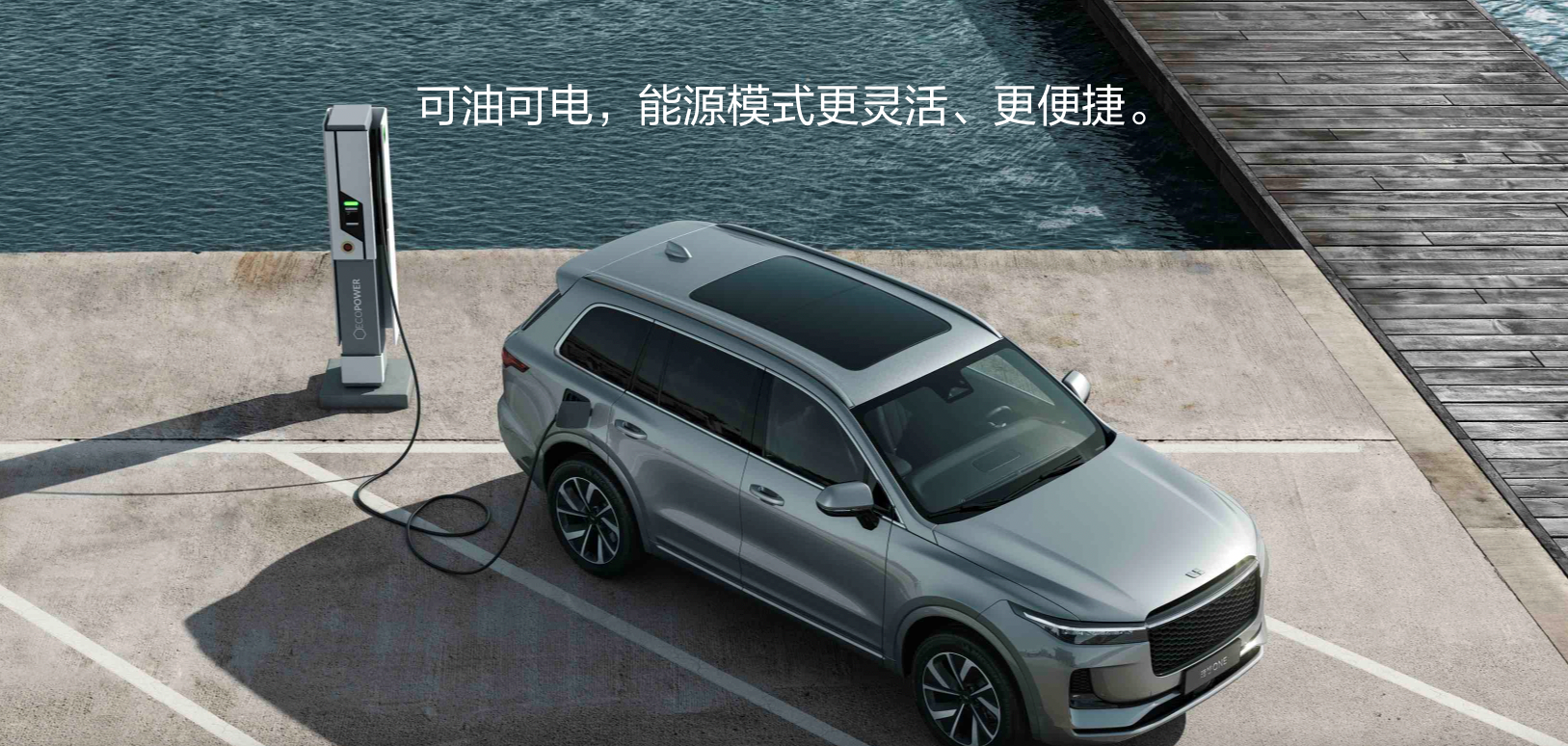
For most people, a daily 200 km urban commuting range is enough, while longer distance travel may involve intercity trips or even longer distances. For these scenarios, Ideal hopes to meet the energy demand with fossil fuel-based generators.
That is to say, the pure electric range of Ideal’s extended-range products is likely not related to the product positioning, price, or the improvement of battery material and combination technology, but will continue to adhere to the product concept of “electricity for city use, gasoline for long-distance use.“
In fact, this is somewhat similar to the product logic of Apple Watch. Since the first generation of Apple Watch, the single charge range has been one day. Even in the current seventh generation, the range is still one day. Can’t Apple achieve a two-day range? Compared with the first generation, the seventh generation has a larger screen, more features, and even added high-consumption features such as “always on” to improve the user experience. Apple just pays more attention to functional attributes in product selection and analyzes range problems through usage scenarios.

Back to Ideal L9, with current supply chain technology, Ideal can completely use NCM 811 high-energy-density batteries and integrating technologies such as CTP to install more batteries and achieve a longer pure electric range. However, when it comes to user driving scenarios, this is contradictory to its value proposition of “electricity for city use, gasoline for long-distance use,” and it is also difficult to truly achieve long-distance pure electric drives.
Most importantly, the costs will soar, and in the end it will be the consumers who bear the bill.In terms of electric motors, the ideal L9 adopts an intelligent four-wheel drive system, with a maximum power of 130 kW for the front-drive motor and 200 kW for the rear-drive motor. The total power reaches 330 kW, and the torque reaches 620 N·m. The 0-100km/h acceleration time is 5.3 seconds. Compared with the ideal ONE, which has a significant improvement in powertrain with 100 kW in the front and 140 kW in the rear, the L9 also performs well in acceleration compared to similarly sized full-size SUV models.
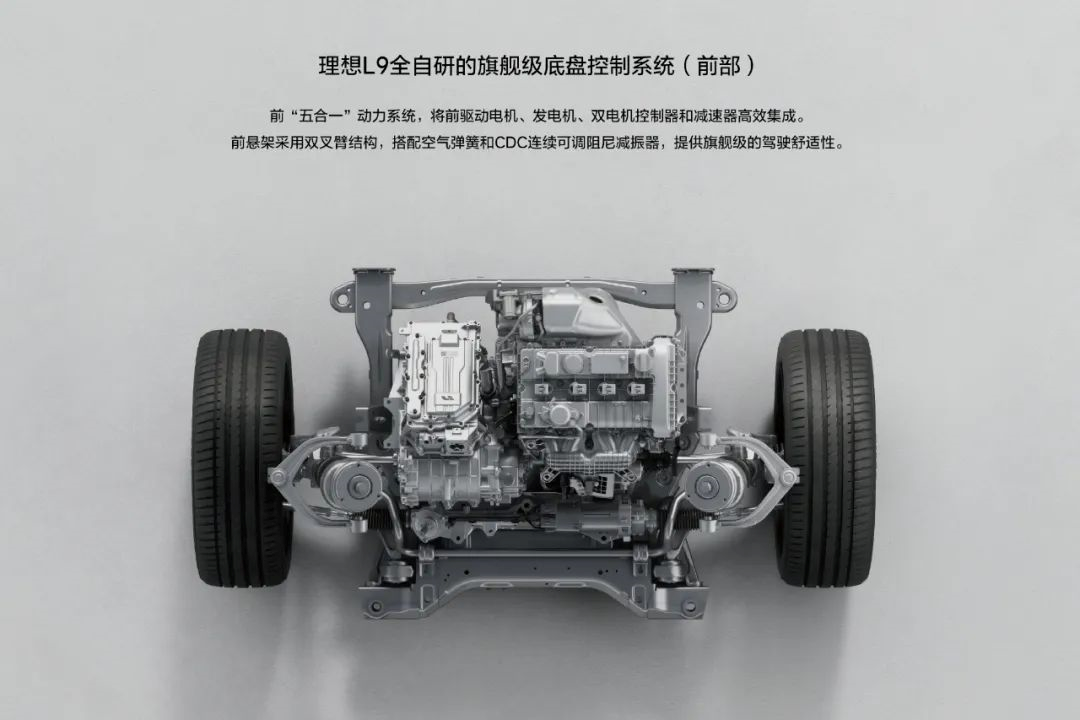
Meanwhile, the front “five-in-one” and rear “three-in-one” power system has higher integration, which will further improve the vehicle layout of the L9 and the utilization of related interior space.
More than just double-wishbone suspensions
The front suspension of the Ideal L9 adopts a double-wishbone structure, and the rear suspension adopts a five-link structure. In contrast, the Ideal ONE adopts front MacPherson and rear multi-link suspension structures. The MacPherson suspension is characterized by simplicity, smaller space occupation, and lower cost, but weaker stability, anti-roll and braking nodding abilities. The biggest disadvantage of the double-wishbone structure, besides cost, is the challenge it poses to spatial arrangement. The greater size of Ideal L9’s body and the high integration of its power system give the double-wishbone structure more room to play, which will improve the L9’s handling and stability.
In addition, the Ideal L9 comes standard with CDC continuously adjustable damping shock absorbers and air springs. From a supplier perspective, the air springs use the German brand WABCO, which is the same source as the Xpeng P001. The CDC shock absorbers are from ZF, and brands such as NIO, XPeng, and Hongqi have adopted ZF’s shock absorption system.
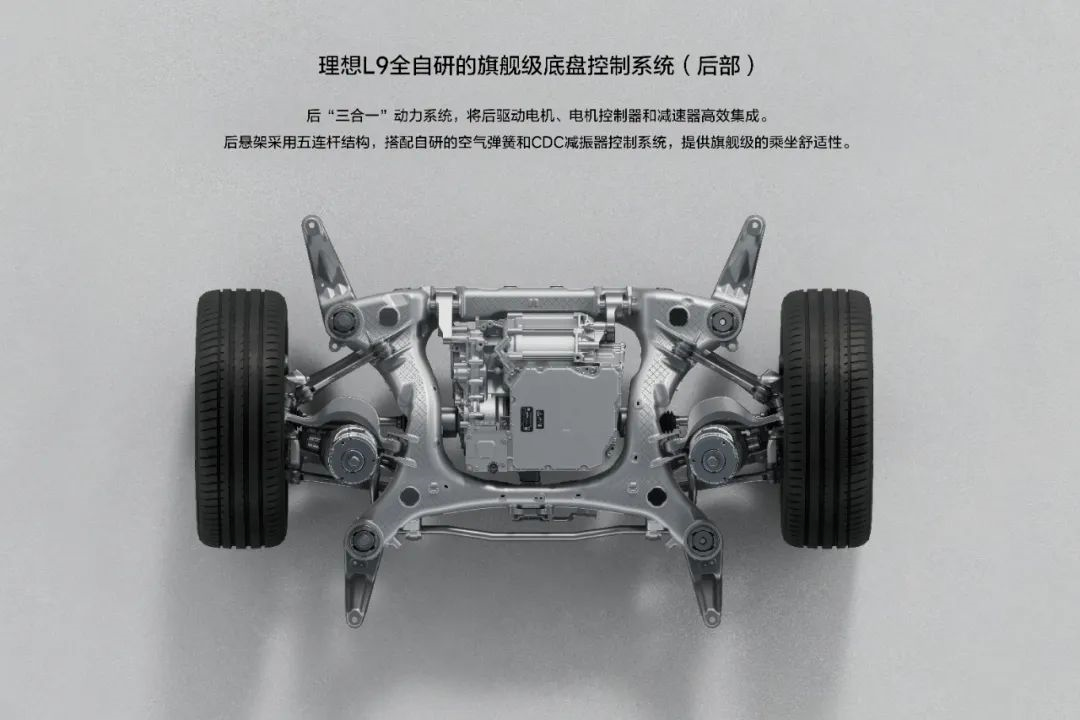
Ideal also introduced its fully self-developed chassis control system. This provides a development foundation for continuous iteration based on user scenarios after the Ideal L9 is delivered. For example, in the future, the Ideal L9 will lower its body height when parking to provide users with a convenient experience for getting on and off the car, as well as loading and unloading baggage.There is precedent in the industry, such as the Track Mode of the Tesla Model 3 Performance. In 2020, Tesla provided an OTA upgrade package for the Model 3 Performance’s Track Mode. Drivers can achieve better results in the track by customizing the vehicle’s control settings, including adjusting different output torques of the front and rear motors, stability assist and energy recovery braking, real-time monitoring of the vehicle’s status, G values, maximizing cooling, and even recording lap times, video recordings, and driving data, all achieved thanks to Tesla’s advanced proprietary capabilities without any hardware assistance, which is realized through software.
Although the R&D of the L9 does not fit perfectly with the Track Mode, it has laid a foundation for the chassis adjustment of full-size SUV’s use scenarios.
Central Domain Controller
The last bright spot in the series we are discussing is the self-developed central domain controller of the L9.
According to the ideal side, the controller’s hardware uses NXP’s S32G vehicle-grade chip, and the specific model is not known whether it is G2 or G3. S32G integrates traditional MCU and ASIL D functional safety, network acceleration, application processing, and supports automatic driving applications.
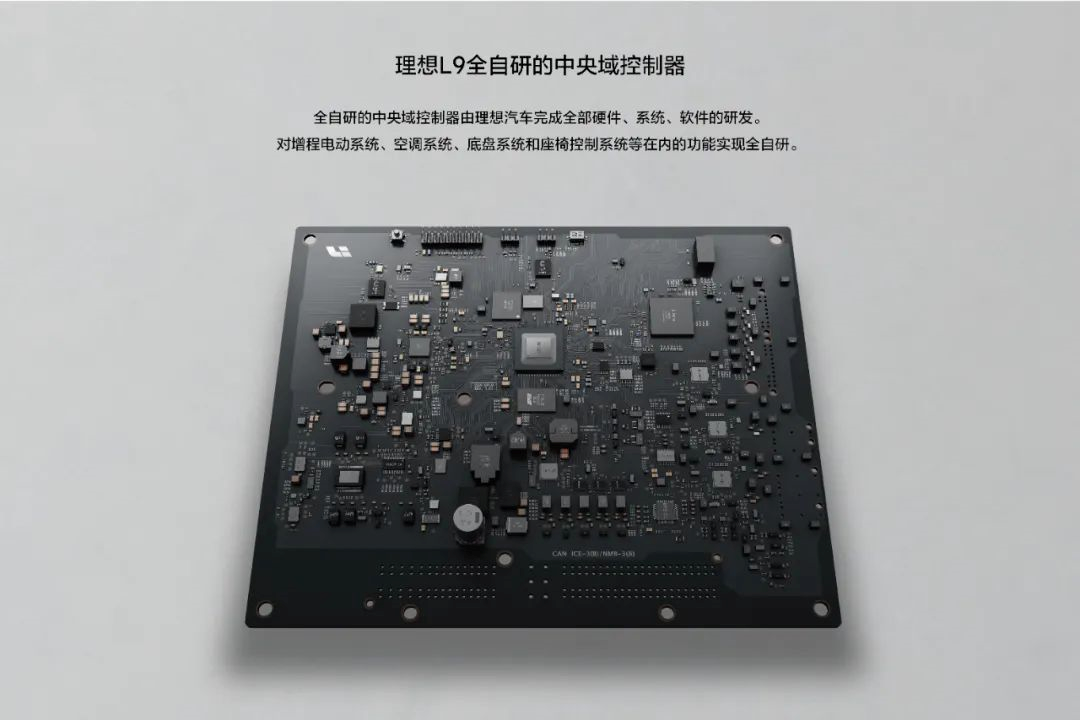
Interestingly, the scope of the controller’s management covers functions such as the range-extended electric system, air conditioning system, chassis system, and seat control system, which is different from most existing intelligent automotive electronic and electrical architectures except Tesla.
In past electronic and electrical architectures, each domain was clearly divided according to its functions. For example, the first generation of NIO’s electronic and electrical architecture can be divided into chassis domain, auxiliary driving domain, power domain, information entertainment domain, and vehicle body domain.
On the road to higher integration, Model 3 broke this situation. Tesla’s electronic and electrical architecture is divided into three parts, in which the central domain controller integrates automatic driving and entertainment control modules, the right body domain controller inherits automatic parking in and out, thermal management, power system, BMS, etc., and the left body domain controller is responsible for lighting, vehicle stability systems, steering column control, etc., without any clear functional attribute division.
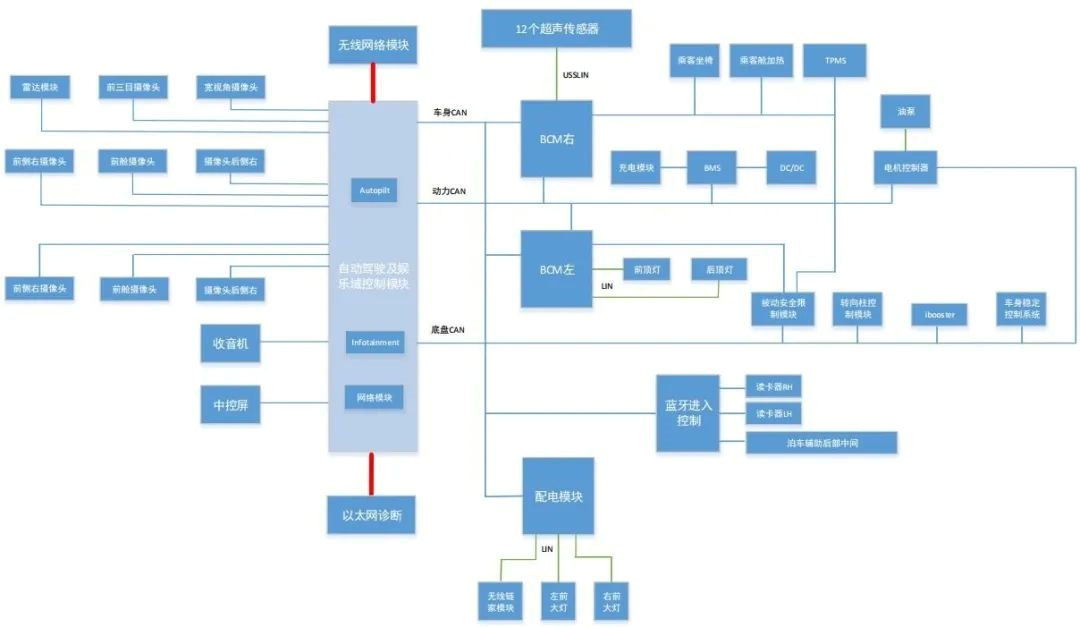
This also reduced the total length of the Model 3’s onboard harness from 3 km of the Model S to 1.5 km, resulting in a substantial cost reduction under high integration and easier manufacturing. The greater depth and breadth of self-development have also laid a development foundation for the ongoing OTA updates of Model 3.From the perspective of the “central domain controller” in the L9 multifunctional centralized management, it seems that the ideal car is also integrating more sub-modules at a higher dimension of integration. Although the full picture of the L9 electronic and electrical architecture is still partially concealed, its advanced nature in this dimension can already be glimpsed.
Well, that’s all for the release of the Ideal L9 this time. What other aspects are you interested in about the Ideal L9? Feel free to let us know in the comment section!
This article is a translation by ChatGPT of a Chinese report from 42HOW. If you have any questions about it, please email bd@42how.com.
